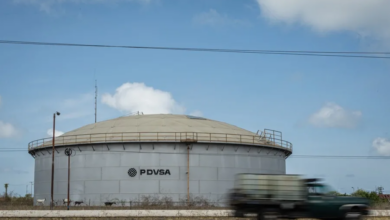Latin America represents 20% of wasted food on the planet
A new study by the United Nations Food and Agriculture Organization, FAO, reveals that Latin America and the Caribbean represent 20% of the food that is lost or wasted in the world.

Vegetables and vegetables on a table. / Photo: Pixabay – Reference Image
LatinAmerican Post | Alberto Castaño
Listen to this article
Leer en español: Latinoamérica representa el 20% de comida desperdiciada en el planeta
This area of the planet is home to 9% of the total population of the earth and in it, entire communities go to bed without food, while in other places food is lost or wasted.
According to the agency, on the planet, 815 million people suffer from malnutrition and every day 25 thousand people die of hunger and they ensure that the problem is not food shortages, but the lousy distribution of them. Statistics vary according to regions or countries around the world. One of the most unfortunate figures comes from Yemen, where every 10 minutes a child dies from hunger.
Around 8,500 are children who die each day from malnutrition. And according to calculations by UNICEF, the World Bank and the World Health Organization, WHO, it is estimated that 6.3 million children under 15 died in 2018 due to mostly preventable causes. This means the death of a child every 5 seconds.
But to all these figures are added the estimates that FAO makes regarding the amount of food lost or wasted around the world. The United Nations agency says that between a third and a quarter of the food produced on the planet becomes waste and that amount would reach to feed an approximate number of 2,000 million human beings a year.
The concept of 'food loss' refers to the phases of production, post-harvest, storage, and transportation. For its part, 'food waste' is associated with the behavior of wholesalers and retailers, food sales services and consumers.
Read also: Colombian Government authorizes shark fishing and the use of its fins
The association of these two concepts with environmental effects and their possible reduction, by reducing both loss and waste, have managed to focus the attention of the planet on this sad phenomenon that afflicts not only with hunger to the population, but also with systematic loss and progressive environmental services that support the quality of life of all communities around the world, without any distinction in reference to the amount of food to which they have access or waste. That is, it does not matter if in the most developed countries of the world they do not suffer from hunger, they are also affected by the loss of environmental and ecosystem services globally.
Losing or wasting food is closely associated with the generation of Greenhouse Gases which, as we all know, are the main causes of global climate change. The production of all these foods, which quickly become waste, involves the use of immense amounts of natural resources such as water, soil, fertilizers, etc., which could be avoided if they were not used to produce something that is going to be wasted or lost.
Foods that are not consumed are destined for waste or loss, but resources were still used in their production and the worst part is that after the waste more resources are required to produce more food.
A study by Matti Kummu Ph.D. of the Department of Environment of the University of Aalto in Finland, concludes that about 25% of the kilocalories produced worldwide are wasted, which would be equivalent to 23% of wasted natural resources in the same way to their production. The amount of land destined for planting around the world to produce such an amount of food corresponds to almost all of the arable land in Africa.
Also read: Rethinking the science of plastic recycling
The case of Latin America is supremely sad, since it is estimated that about 50 million inhabitants of the region go to bed hungry every day and with the food that is wasted, only in retail, that is to say In supermarkets and retail stores, nearly 70% of the population of Latin America could be fed hungry.
“Foods that are lost at this level in Bahamas, Jamaica, Trinidad and Tobago, Belize, Colombia are equivalent to those that would be needed to feed all those who suffer from hunger in those countries. Another twelve could have food equivalent to those they need to achieve the first Millennium Development Goal if they reduce only those losses,” says Raúl Benítez, FAO Regional Representative for Latin America and the Caribbean.
So if you are one of those who have leftover food to the point of throwing it in the trash can, remember that if you did not prepare or order so much food that you will not consume, this could help ensure the food security of many human beings that suffer from famine in all parts of the world.





